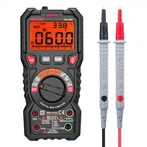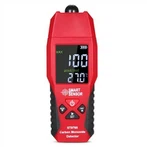Common units for gas detectors
1. Gas molar volume: the volume occupied by gas per unit amount of substance. The symbol is Vm. The common unit is L/mol or m3/mol. Under standard conditions (0°C, 101KP state), the volume occupied by 1 mol of any gas is approximately 22.4L.
2. Vol%: refers to the concentration volume ratio of the mixed gas.
3. %LEL: refers to the percentage of the lower explosion limit of flammable gas. The LEL values of various flammable gases can be obtained in relevant information.
4. ppm (parts permillion)/(1×10-6)/(μ): represents parts per million, or parts per million.
5. ppb: parts per billion, relative to ug/L, ng/g.
6. ppt: parts per trillion, relative to ng/L, pg/g.
7. Conversion of gas measurement units
(1). Conversion of Vol% and %LEL
Formula: %LEL=(V÷LV)×100 / Vol%=(L×LV) ÷100
V: known volume ratio of combustible gas concentration, Vol%;
LV: The corresponding concentration volume ratio of 100% LEL combustible gas, Vol%;
L: Percentage of the known lower explosive limit of combustible gas, %LEL.
(2). Conversion of %LEL and ppm
Formula: ppm = (L×LV)×100 / %LEL=PM÷(LV×100)
PM: known gas, ppm;
L: Percentage of the known lower explosion limit of flammable gas, %LEL;
LV: The corresponding concentration volume ratio of 100% LEL combustible gas, Vol%.
(3). Conversion of mg/m3 and ppm
The gas concentration measured by most gas detection instruments is volume concentration (ppm). According to our country's regulations, especially the environmental protection department, gas concentration is required to be expressed in mass concentration units (such as mg/m3). Our national standards and specifications are also expressed in mass concentration units (such as mg/m3).
Using the mass concentration unit (mg/m3) as the expression method of air pollutant concentration can easily calculate the true amount of pollutants. However, the mass concentration is related to the temperature and pressure environmental conditions of the detected gas, and its value will vary with changes in temperature, air pressure and other environmental conditions; in actual measurement, the temperature and atmospheric pressure of the gas need to be measured simultaneously. When ppm is used to describe the concentration of pollutants, this problem does not occur because the volume ratio is used.
The conversion of concentration units ppm and mg/m3 is calculated according to the following formula:
mg/m3=M/22.4*ppm*[273/(273+T)]*(Ba/101325)
In the above formula: M—is the molecular weight of the gas, ppm—the measured volume concentration value, T—temperature, Ba—pressure. This is a standard algorithm, but in our actual calculation work, temperature and pressure can be ignored for the sake of calculation and memory. Conveniently it can be recorded as:
To calculate the molecular weight of M, please refer to the periodic table of elements.
For example, what is the conversion of 100ppm H2S to mg/m3?
The M value of H2S=1*2+16=18, that is, 18/22.4*100=80 mg/m3. vice versa.






